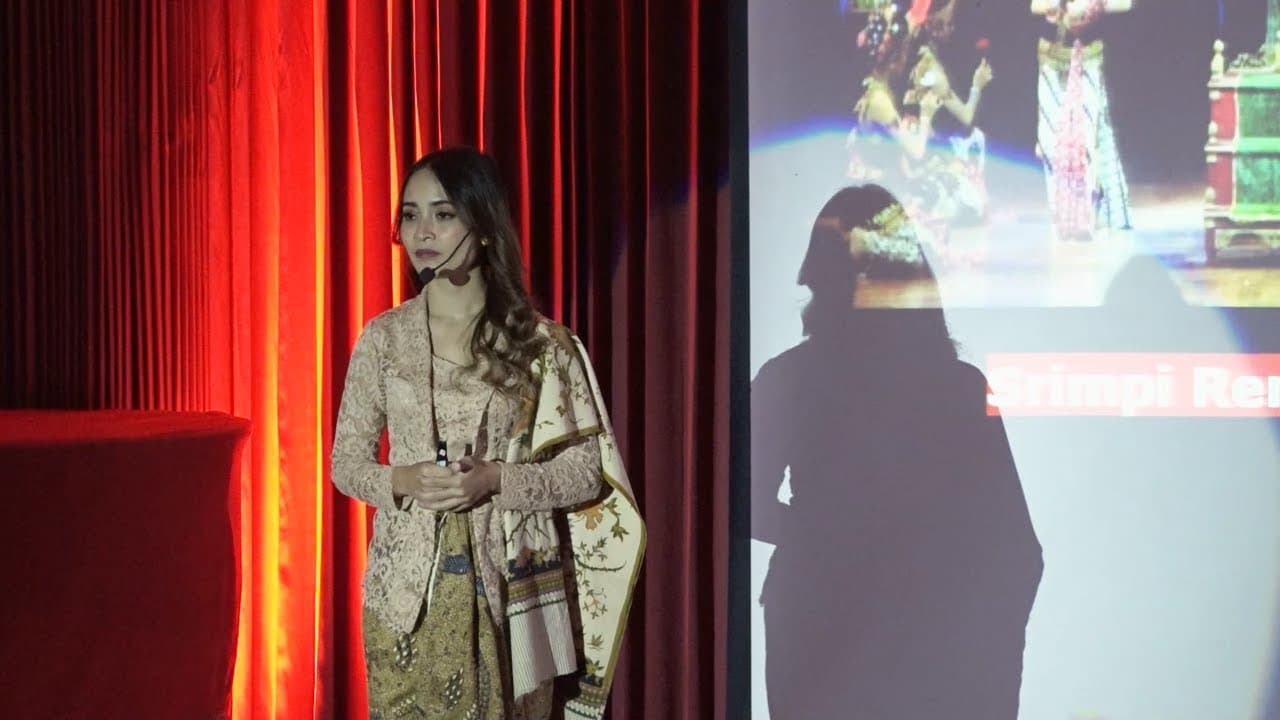Duality in Dance: Srimpi Kawung's Human Nature | Mila Rosinta Totoatmojo | TEDxUGM
08 May 2024 (over 1 year ago)

Introduction
- The speaker introduces themselves as a representative of a dance school and laboratory in Yogyakarta and presents the theme of "Duality in Dance: Srimi Kawung Humanity."
- The speaker asks the audience about their social media usage and their appreciation for Indonesian cultural content.
Cultural Appropriation
- The speaker highlights the issue of cultural appropriation, such as the claim of Reog Ponorogo by Malaysia and the instances of Indonesian batik being claimed by other countries.
Traditional vs. Creative Dance
- The speaker discusses the differences between traditional dance (tari tradisi) and creative dance (tari kreasi), highlighting that traditional dance is passed down through generations with strict adherence to established forms and philosophies, while creative dance allows artists to present Indonesian cultural elements in contemporary or personal styles.
Srimi Kawung Dance
- The speaker presents the Srimi Kawung dance as an example of creative dance inspired by the Kawung batik motif, showcasing a 14-year journey of development and refinement.
Batik Kawung Motif
- The video discusses the philosophy and symbolism behind the Batik Kawung motif, a traditional Indonesian batik pattern.
- The motif features a central circle (Pancer) surrounded by four smaller circles, representing balance and harmony.
- The motif also symbolizes the four elements of nature (earth, water, fire, and air) and the four cardinal directions (north, south, east, and west).
Choreography Challenges
- The choreographer faced challenges in creating the dance, such as ensuring that the four dancers' energy and power were evenly balanced to achieve harmony.
- The choreographer also had to create a connection between the dancers and the Batik Kawung fabric, using various techniques and rituals.
Preserving Indonesian Culture
- The video highlights the importance of preserving and promoting Indonesian culture and arts, including traditional dance and batik motifs, for future generations.
- The choreographer encourages young artists to draw inspiration from Indonesian culture and incorporate it into their work, while also adapting it to contemporary times.
- The speaker emphasizes the importance of preserving Indonesian arts and culture in the face of external cultural influences.
Promoting Indonesian Art and Culture
- Social media should be utilized effectively to promote Indonesian art and culture.
- The speaker introduces a one-minute and three-minute dance tutorial series called "Ayo Belajar Menari" to make traditional dances more accessible to the current generation.
- The "Traditional Dance Challenge" encourages people to learn and perform traditional dances through pre-choreographed routines and tutorials.
- Workshops that combine dance with other disciplines, such as psychology, are conducted to showcase the therapeutic benefits of dance.
Collaboration and Support
- The speaker stresses the significance of collaboration and mutual support in the arts, encouraging young people to express themselves creatively without fear of judgment.
Conclusion
- The speaker urges individuals to appreciate and preserve Indonesian arts and culture, emphasizing the importance of cherishing one's roots and heritage.
- The speaker invites viewers to join a collaborative effort to promote Indonesian art and culture worldwide and questions whether they are willing to let other countries claim Indonesian arts or study them abroad in the future.